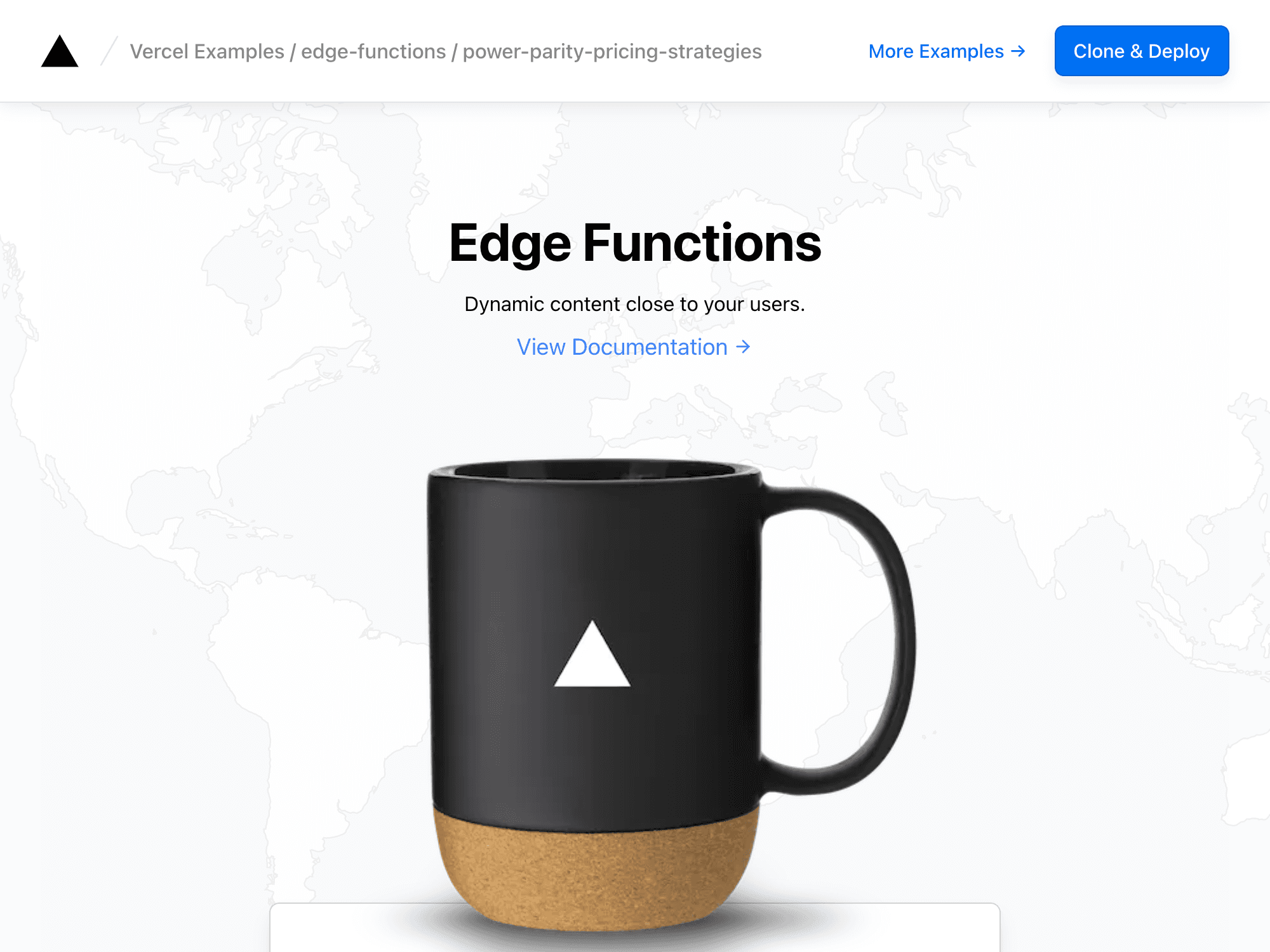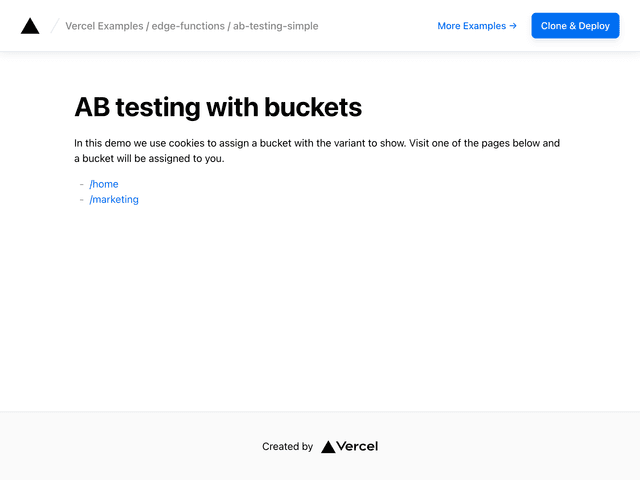
Power Parity Pricing Strategies
The example shows the differences between doing PPP at the edge using information from the request geolocation object, Node.js SSR, and client-side rendering.
Demo
How to Use
You can choose from one of the following two methods to use this repository:
One-Click Deploy
Deploy the example using Vercel:
Clone and Deploy
Execute create-next-app with npm or Yarn to bootstrap the example:
Next, run Next.js in development mode:
Deploy it to the cloud with Vercel (Documentation).
